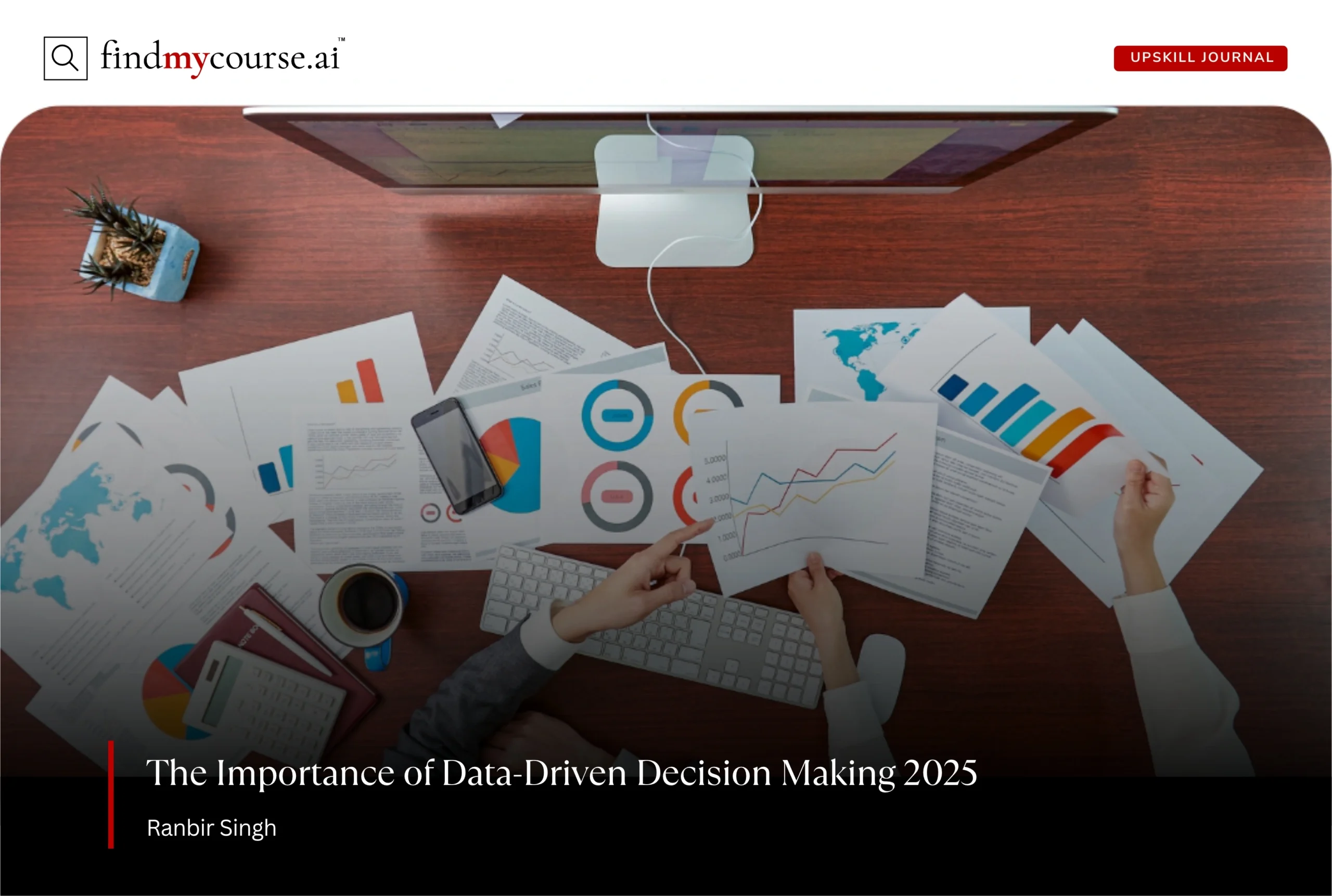In a world overflowing with information, why rely on guesswork? Every day, organizations face decisions that shape their future. Whether you’re running a company or planning your next move, trusting good data can make all the difference. Experience and intuition still matter, but the real game-changer is the ability to make choices grounded in clear, reliable data. As we move deeper into the digital age, data-driven decision making isn’t just an advantage—it’s quickly becoming essential for success, both in business and in everyday life.
Understanding Data-Driven Decision Making
So, what exactly is data-driven decision making? In the simplest terms, it’s the practice of basing important choices on solid evidence rather than assumptions or guesswork. This might sound obvious, yet many organizations still make critical calls based on habit or hunches.
With reliable data at our fingertips, we can spot patterns, identify opportunities, and avoid potential pitfalls. In today’s interconnected world, having access to good information is only part of the story—the real value comes from knowing how to use it.
Why Data Matters Now More Than Ever
It’s no secret that our world produces more information than ever before. For instance, the International Data Corporation projects that global data will surpass 180 zettabytes by 2025. From online sales numbers to customer feedback, nearly every action leaves a digital trace. As a result, leaders who embrace data-driven decision making find themselves better equipped to respond to change.
Moreover, educational institutions are encouraging students to study online and build their data literacy, knowing these skills are vital in today’s job market. For instance, many professionals now enroll in online courses offered by respected universities to strengthen their ability to interpret and use data effectively.
The Benefits of a Data-Driven Culture
Adopting data-driven decision making is about more than just collecting numbers. It’s about creating a culture where evidence is valued, questions are welcomed, and continuous improvement is encouraged.
- Clarity and Confidence
When data supports a decision, teams move forward with more confidence. In addition, they can clearly explain why certain choices were made, building trust both internally and externally. - Faster, More Agile Responses
Markets shift and unexpected events arise. Organizations using data can adapt quickly, often spotting new opportunities or risks before their competitors. - Better Results Over Time
Because data-driven decision making involves tracking results, it naturally supports ongoing learning. As teams review what worked—and what didn’t—they can adjust their strategies and achieve even greater success in the future.
Examples of Data-Driven Decision Making
Real-world examples show just how much of an impact data-driven decision making can have:
- Retail:
Companies like Amazon use customer data to recommend products, adjust inventory, and create targeted marketing. These data-driven choices boost sales and improve the shopping experience. - Healthcare:
Hospitals track patient outcomes and trends to refine treatments, predict busy periods, and allocate staff where they’re needed most—leading to better patient care and efficiency. - Education:
Schools and online learning platforms review student performance data to update lesson plans and personalize learning, helping students master challenging subjects more effectively. - Government:
City planners analyze traffic and public transport data to reduce congestion and make commuting smoother for residents. - Sports:
Teams study player statistics and health data to optimize training, select lineups, and reduce injuries, gaining a real edge on the field.
Thus, in each case, data-driven decision making helps organizations respond quickly, use resources wisely, and achieve better outcomes.
Making It Work: Simple Steps for Getting Started
You don’t need advanced tools or a data science degree to get started. Here are a few practical steps anyone can follow:
- Ask the Right Questions: Begin by getting clear about what you want to learn. Are you trying to boost sales, improve customer service, or choose a new market to enter? The right question is the first step toward finding the right data.
- Gather Reliable Information: Look for trustworthy sources—your own records, customer surveys, or official statistics. In today’s connected world, much of this information is easier to access than ever before.
- Keep Analysis Simple: Focus on the key numbers or trends that matter most. Often, a simple chart or comparison can reveal valuable insights without overwhelming you with details.
- Act—and Reflect: After making a choice, check the results. Did things improve? If not, what can you learn from the outcome? Data-driven decision making is all about adapting and getting better over time.
Navigating Challenges and Avoiding Pitfalls
Naturally, there are obstacles along the way to successful data-driven decision making. Some teams worry about too much data or not knowing where to start. Others are concerned about privacy or data security. However, beginning with small projects and clear goals can make the process feel more manageable.
Here are some common pitfalls to avoid:
- Relying on Poor-Quality Data: Decisions are only as good as the data behind them. Outdated, incomplete, or inaccurate information can lead you in the wrong direction.
- Collecting Too Much Data: Gathering every possible metric can be overwhelming and distract from what matters most. Instead, focus on a few key indicators that align with your goals.
- Ignoring the Bigger Picture: Numbers can’t always capture context, human experience, or unique circumstances. Combine data insights with real-world understanding and team input.
- Confirmation Bias: It’s easy to pay attention only to data that supports your current beliefs. Make it a habit to challenge your assumptions and consider different viewpoints.
- Analysis Paralysis: Over-analyzing can delay decisions or cause inaction. Set clear decision points and trust the process, even if not every detail is perfect.
Tools and Technologies That Help
- Spreadsheets (Excel, Google Sheets): Great for beginners; easy to organize, calculate, and visualize simple trends. Useful for small businesses or early-stage projects.
- Data Visualization Tools (Tableau, Power BI): Turn raw numbers into clear, interactive charts and dashboards. Make it easier to spot trends and share insights with your team.
- Cloud-Based Dashboards (Google Data Studio, Zoho Analytics): Track real-time metrics and collaborate across teams or locations. Ideal for organizations that need frequent updates and easy sharing.
- Artificial Intelligence and Machine Learning Solutions: Spot complex patterns, forecast outcomes, and automate analysis. Helpful for large datasets or when deeper insights are needed.
Final Thoughts
As technology continues to advance and the world grows more complex, data-driven decision making will become even more vital for success. No matter your field, using data wisely empowers you to turn uncertainty into opportunity. Therefore, by making data part of your everyday choices, you set yourself up for smarter, more confident decisions. And whenever you need guidance along the way, our AI assistant is always here to help.


